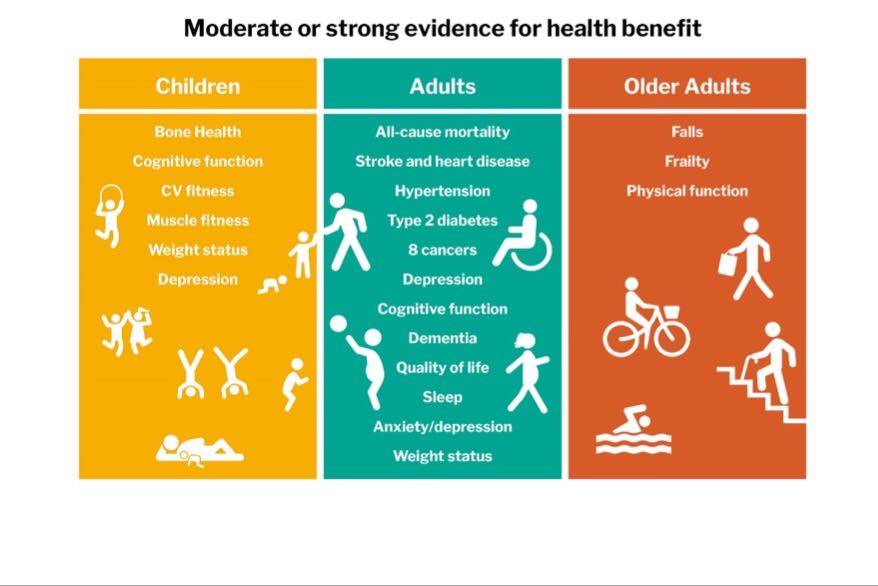We have recently linked to a new report published by the Department of Health and Social Care and the Scottish Government on our Evidence pages (see Health) called the UK Chief Medical Officers’ Physical Activity Guidelines that provides a wealth of evidence to show just how valuable exercise such as active travel is, not just to ourselves personally, but also on a much wider scale. We believe this goes a long way to show just how much of a health issue active travel is and should be treated as, particularly when it comes to funding considerations.
Here are some key quotes and infographics pulled out by one of our members for us.
It is recommended that people are active every day. Spreading activity across the day or week can help make the guidelines achievable within daily living; for example, walking, wheeling or cycling for daily travel is often the easiest way to get physically active.

Inactive and sedentary behaviours are those which involve being in a sitting, reclining or lying posture during waking hours, undertaking little movement or activity and using little energy above what is used at rest (9). Examples of sedentary behaviours include sitting in a chair while using a screen or reading, or a child sitting in a car seat or buggy. They do not include being active while in a sitting or reclining posture, e.g. wheeling, chair exercises, or seated gym work.
Periods of inactivity or sedentary behaviour are an independent risk factor for poor health outcomes and should be minimised when possible.

Children and young people should engage in MVPA for an average of at least 60 minutes per day across the week. This can include all forms of activity such as physical education, active travel, after-school activities, play and sports.
Children and young people should aim to minimise the amount of time spent being sedentary, and when physically possible should break up long periods of not moving with at least light physical activity.

For good physical and mental health, adults should aim to be physically active every day. Any activity is better than none, and more is better still.
Each week, adults should accumulate at least 150 minutes (2 1/2 hours) of moderate intensity activity (such as brisk walking or cycling); or 75 minutes of vigorous intensity activity (such as running); or even shorter durations of very vigorous intensity activity (such as sprinting or stair climbing); or a combination of moderate, vigorous and very vigorous intensity activity.
Adults should aim to minimise the amount of time spent being sedentary, and when physically possible should break up long periods of inactivity with at least light physical activity.
Older adults should participate in daily physical activity to gain health benefits, including maintenance of good physical and mental health, wellbeing, and social functioning. Some physical activity is better than none: even light activity brings some health benefits compared to being sedentary, while more daily physical activity provides greater health and social benefits.





